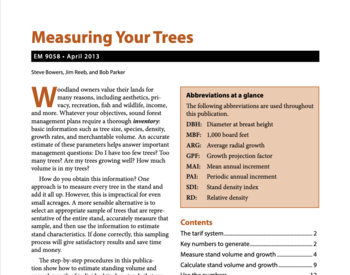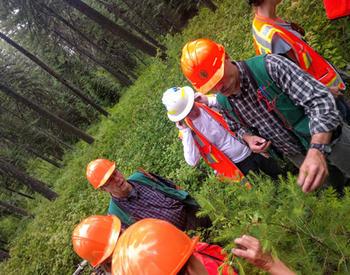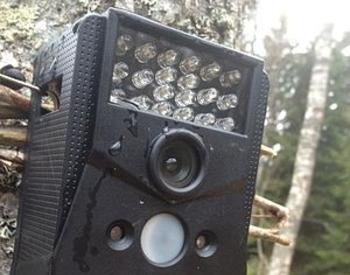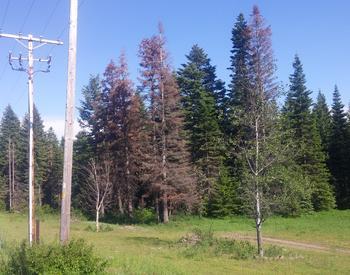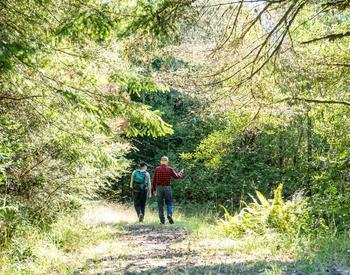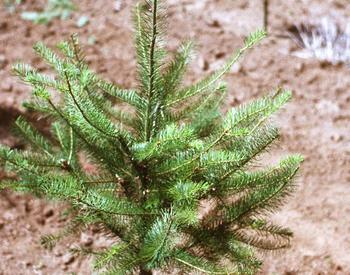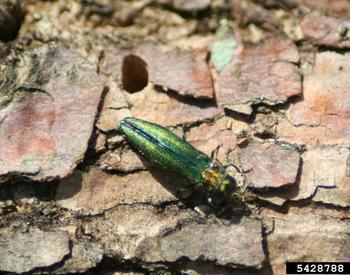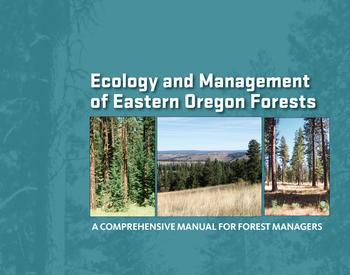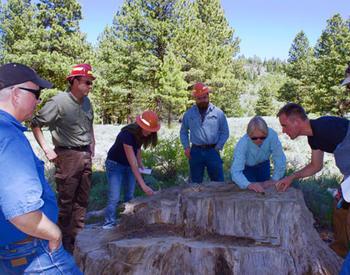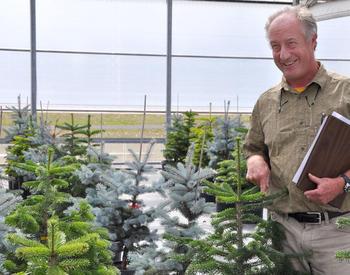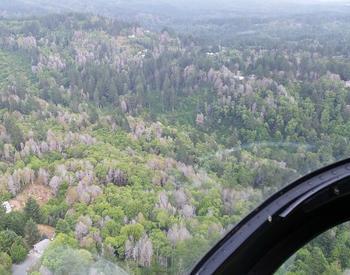Trees are an incredible resource that benefit our community in many ways. Wooded properties are fun to explore and help provide communities with shade, clean water, and food and shelter for animals. Trees are also a valuable renewable resource that provide economic stimulus and materials such as beams to build houses.
Landowners may choose to cut trees on their property for many reasons. For some it’s the culmination of decades of planning and hard work to produce a valuable crop. For others it might be a liquidation of an asset to meet a sudden financial need. Still others might be undertaking a thinning operation to improve forest health, diversity and habitat.
Whatever your reason for selling trees, there are some key things to consider when managing a successful timber sale.
The first and most important step in any timber sale is to carefully think about your goals and objectives as a woodland owner. Goals help you identify what is most important to you when completing work on your land. One way to do this is to create a forest management plan.
Maintaining forest health, habitat creation, income and recreation are all goals that might be reached with the help of a timber harvest. Oregon state law requires that landowners notify the state forester prior to cutting any of the trees on their property. You can complete the necessary form on the Oregon Department of Forestry website or at your local office.
The key to effectively market your trees is knowing what you have. Most small woodland owners miss out by thinking all logs are the same product. Knowing what you have means you can take advantage of potentially higher value products such as poles or export logs and have the right expectations when you are selling.
You can begin to follow the market by collecting information on what products and types of trees log buyers are looking for. Log buyers are the most direct sources of current information about prices and the range of species, sizes and quality levels for their mills. Your goal is to match your trees with the right mill product line. Record what you learn and follow up regularly to identify patterns.
Prior to any harvesting activities, make sure you own the trees you plan on selling, especially if your timber harvest is near a property line. Clearly marking property lines will eliminate any confusion and help maintain neighbor relations. If you are unsure of your property lines, it is worth having a licensed surveyor establish the legal boundaries for you.
Properly designed and maintained roads ensure you can take advantage of any market opportunity. Anything less will severely limit equipment access and may prevent or delay your harvest plans. If you don’t have road access to your trees, Oregon law allows landowners to cross another’s property if no alternative is available. Talk to your neighbors and put access agreements in writing before starting any work.
When you’ve identified a good time to sell. Call as many log buyers as possible. The highest bid isn’t always the most profitable bid. When choosing a bid, consider special requirements that could increase operation costs and distance to the mill. The farther the mill, the higher the trucking costs. Once you’ve chosen a buyer, have a purchase order drawn up so both parties agree on the specs and price of the logs to be delivered.
Choose the logger through a competitive bidding process. Invite at least three loggers to tour your sale area individually. Be clear about your plans and ask each logger to submit a bid. The lowest bid isn’t necessarily the best bid. Choose the logger that has a good price but will also meet your objectives for log production, resource protection and responsible business practices. These should be reflected in a written, legal agreement. Remember, the most desirable loggers are busy, so plan at least six months ahead.
Stay involved throughout the logging process, observing operations and frequently communicating with the logger. Much can go astray without your vigilance. This would allow you to correct anything you are not happy with early in the process.
Once the harvest is over, you may need to replant the area depending on the quantity and quality of trees you cut. The Oregon Department of Forestry will send you a letter if reforestation is required. Seedlings are hard to find these days, so make sure you order them before you harvest.
Selling logs is a complicated process that requires time and a thorough understanding of the timber industry, but when done correctly it is a useful tool to help you meet your management objectives. Those lacking experience should consider seeking the assistance of a consulting forester.

